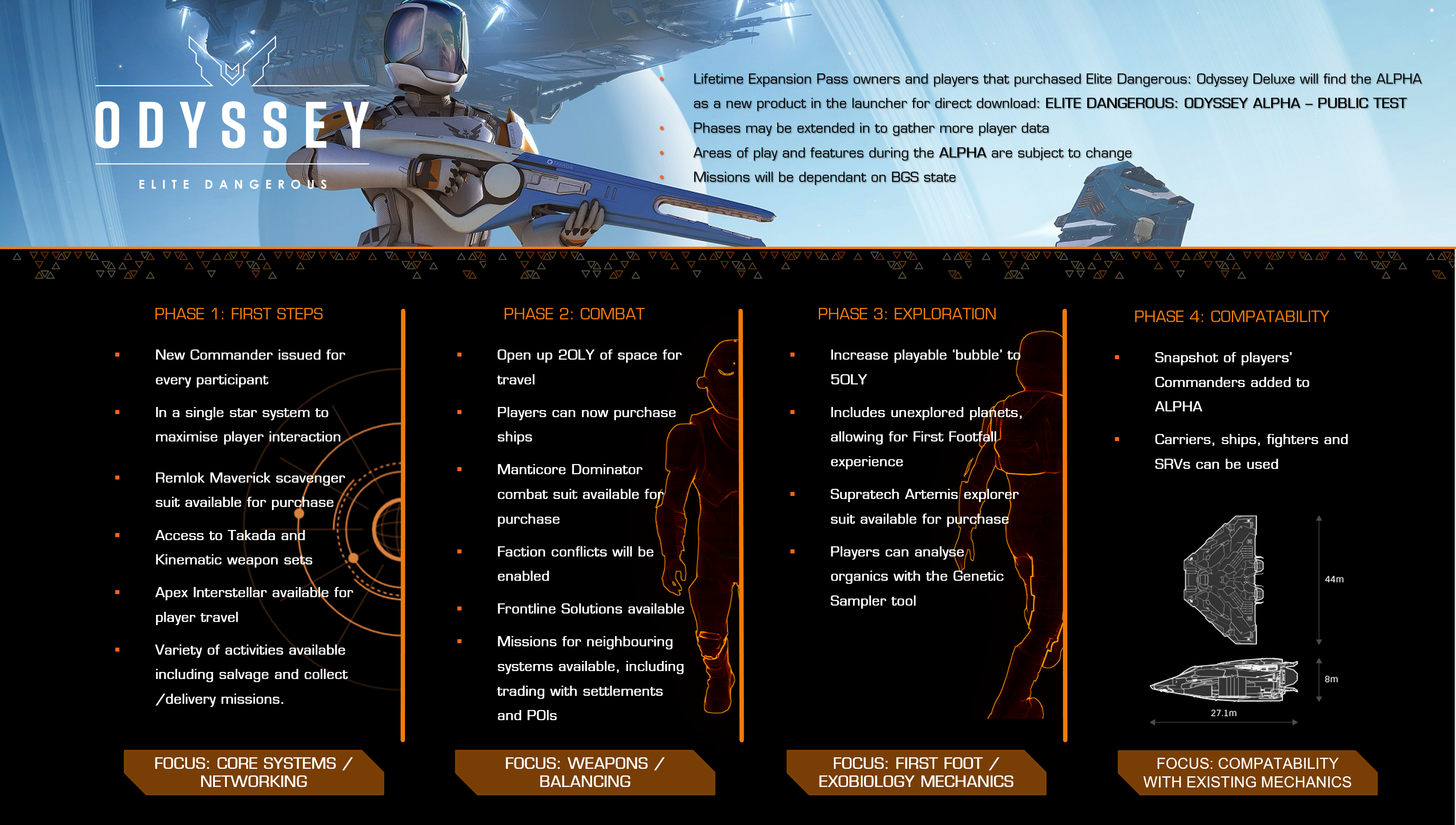
Mar 29, 2021
Elite Dangerous - Zac_Frontier
Greetings Commanders,
We're excited for you to take your first steps in Elite Dangerous: Odyssey. Read below to ensure the best possible experience during the Alpha.
To gain access to the Alpha you must pre-order the Deluxe Alpha version of Odyssey.
Alpha Phase 1 Focus: Core Systems and Networking
Start Time: 13:00 UTC/14:00 BST
Features:
New content will be rolled out in further Alpha phases.
Specifications*
Recommended Specs (High Settings at 1080p)
Minimum Specs (Low Settings at 720p)
Please note, the VR implementations are not currently optimised and not ready for testing at this time.
*These specifications are subject to change as we move toward release.
IMPORTANT: Advice for the Alpha
If you encounter any issues during your Alpha experience please report them as soon as possible via the Odyssey section on the Issue Tracker where our development team will be actively investigating reports. You can check Known Issues here.
Good luck and o7 Commanders!
We're excited for you to take your first steps in Elite Dangerous: Odyssey. Read below to ensure the best possible experience during the Alpha.
To gain access to the Alpha you must pre-order the Deluxe Alpha version of Odyssey.
Alpha Phase 1 Focus: Core Systems and Networking
Start Time: 13:00 UTC/14:00 BST
Features:
- New commander creation; starting from scratch
- On-foot in 1 system: Adityan (Rest of galaxy is permit locked)
- Travel via Apex Interstellar – new to Elite Dangerous
- Variety of local missions available from NPC's and mission boards
New content will be rolled out in further Alpha phases.
Specifications*
Recommended Specs (High Settings at 1080p)
- Intel Core i5-8600K / AMD Ryzen 5 1600 (above 4 GHz recommended)
- 12GB RAM
- NVIDIA GeForce GTX 1060 6GB / AMD Radeon RX 5500
- 60GB available space
Minimum Specs (Low Settings at 720p)
- Intel Core i5-4590 / AMD FX-4350
- 8GB RAM
- NVIDIA GeForce GTX 770 / AMD Radeon R9 280X
- 60GB available space
Please note, the VR implementations are not currently optimised and not ready for testing at this time.
*These specifications are subject to change as we move toward release.
IMPORTANT: Advice for the Alpha
- Phase 1 does not feature a tutorial, please reference the control page for help.
- Planetary Tech, including geometry, will not be final until release. However, players may see colouration changes throughout the Alpha phases.
- All players will start with only a flight suit and pistol. It is not recommended that you start combat missions until you have at least purchased the Maverick suit as AI will be very challenging.
If you encounter any issues during your Alpha experience please report them as soon as possible via the Odyssey section on the Issue Tracker where our development team will be actively investigating reports. You can check Known Issues here.
Good luck and o7 Commanders!





